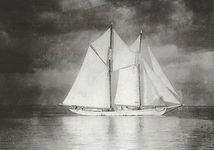
The Mel Fisher Maritime Museum is a 501 (c) (3) accredited, not-for-profit organization existing to research, interpret, and exhibit the maritime history of Florida and the Caribbean in ways that increase knowledge, enrich the spirit, and stimulate inquiry.
Archaeology & Research / More ... Key West Turtle Kraals
The Archaeology of the Key West Turtle Kraals
Archaeological evidence shows clearly that prehistoric Native Key Westers relied heavily on sea turtles as a food source. Throughout the colonial period, Spanish explorers and others noted the abundance of sea turtles in the Florida Keys. When Key West was established as a community in the 1820’s turtling became an integral part of the island’s food supply and economy. Turtles were taken throughout the Keys until the early 1900’s, by which time the local stock was no longer large enough to support an industry. At that point, the Key West turtle processors began to employ Caymanian fishermen, who would sail to the Nicaraguan coast; capture turtles there, and then carry the creatures to Florida where they were turned into soup and meat.


In the early 1920s, the turtle cannery was moved to a central location in the Key West Bight, and the business became an “all in one” operation. The facility operated the schooner A.M. Adams to bring Green turtles from the Caribbean to Key West, where they were placed in holding pens made of closely-spaced concrete piles (“kraals”) to await butchering and canning, or shipment further afield.


The cannery turned sea turtles into soup until 1971, when, because of newly-introduced size-limits, it was no longer feasible to import them – turtles of acceptable size simply did not exist anymore! The facility changed gears and operated as a tourist attraction for many years, and then, in 1995, the aging cannery building collapsed into the water. In 1998, to maintain the historic character of the bight, the cannery was reconstructed. Later, as part of the restoration project, the City of Key West came up with a plan to clean the waters around the building and dredge the turtle kraals.

I'm a paragraph. Click here to add your own text and edit me. It's easy.
In the spring of 2000, at the request of the Florida Bureau of Archaeological Research, staff and volunteers from the Mel Fisher Maritime Heritage Society worked with the dredgers to sort through the muddy bottom of the old turtle pens and recover any archaeological materials found there. It was filthy work, but the dark muck contained a wealth of things related to the turtling business – thousands of turtle bones, butchering-knife handles, whetstones, and other things revealed the mechanics of soup-making. And many other objects were recovered that reflect life in and around the Key West Bight in the mid-twentieth century.





